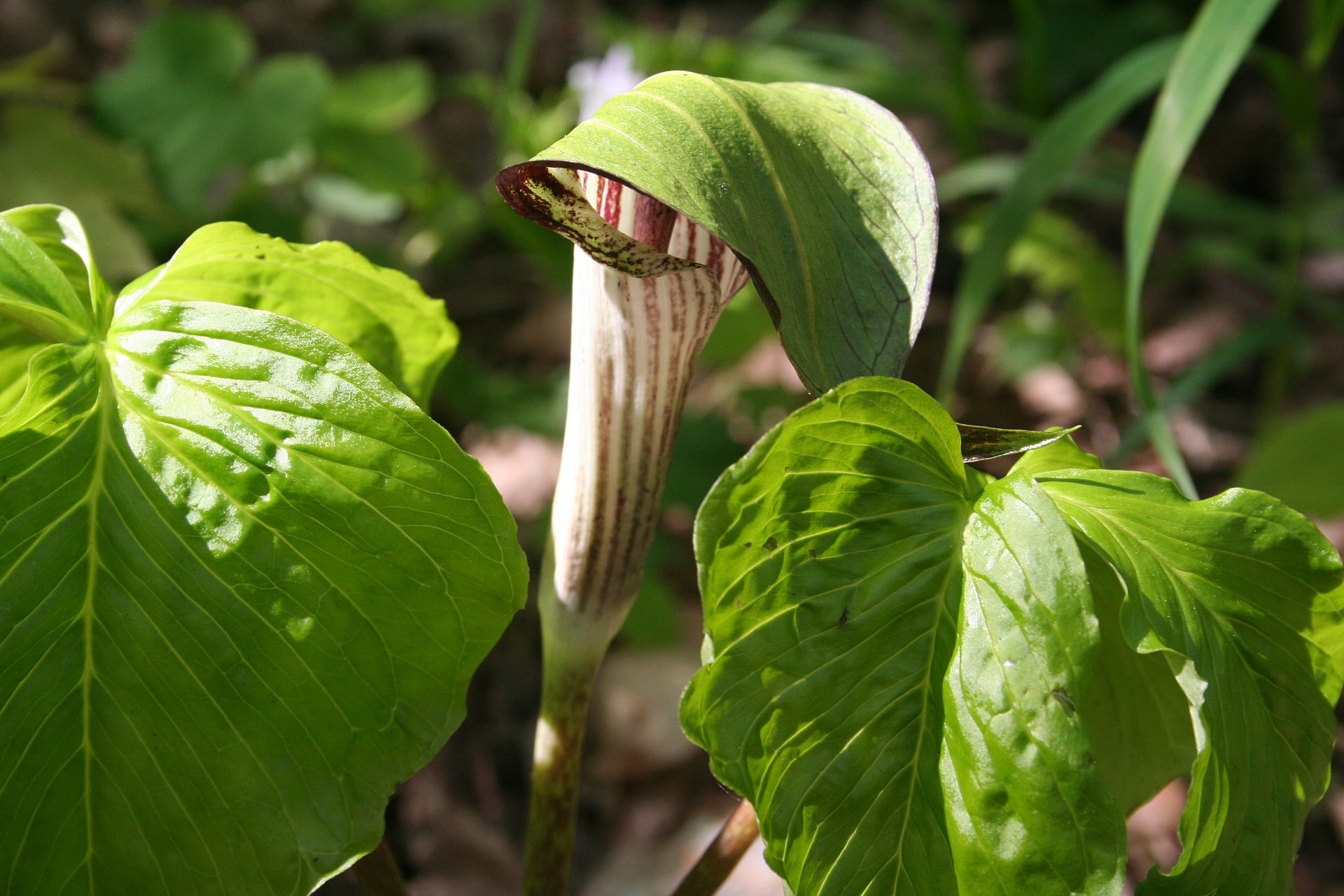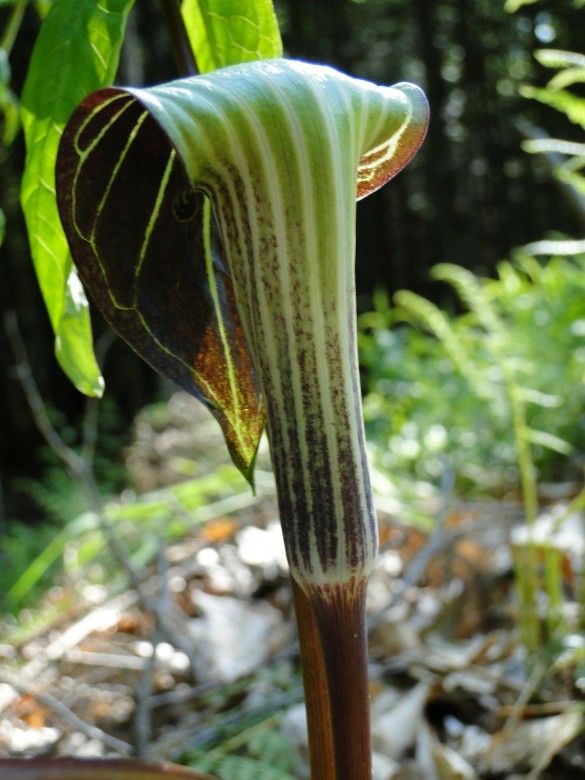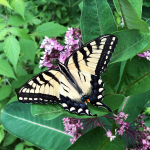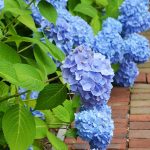Gardens
Are Jack-in-the-Pulpits Poisonous? | Jack-in-the-Pulpit Facts
Are Jack-in-the-pulpits poisonous? Learn how to identify this mysterious woodland plant and read about its unique history and growth habits.

Coffee By Design | Portland, Maine
Photo Credit : Katherine KeenanWhat Are Jack-in-the-Pulpits?
The Jack-in-the-pulpit is a somewhat common, perennial plant that’s found across eastern North America, from Texas to the Canadian Maritimes. The plant’s underground corm produces one to two stems that can be up to two feet tall and are each adorned with three broad leaflets. A third stem holds a single hooded flower, which emerges in late spring or early summer and looks quite intriguing, with its maroon stripes and green hood. The hood of the flower, known technically as a spathe (i.e., “pulpit”), contains a long, stem-like growth called the spadix (or “Jack”), which is where the flower’s reproductive parts are found. It’s from this flower structure that the plant gets it’s common name, Jack-in-the-pulpit.History of Jack-in-the-Pulpits
As a species native to a large part of the United States, Jack-in-the-pulpits have a long relationship with humans. Some Native American peoples prepared the plant’s corm through drying or cooking, then ate it in a fashion similar to that of onions or potatoes. Jack-in-the-pulpits were also used medicinally, as part of a topical ointment meant to treat or ease skin conditions and soreness.Growing Conditions of Jack-in-the-Pulpits
Jack-in-the-pulpits grow in largely deciduous forests with plenty of shade. They prefer rich, moist soil and can often be found near wetlands and vernal pools. In the late summer, after the plant’s flower has been pollinated, it produces a large clump of bright red berries. Each berry contains several seeds, which are spread by birds and other small animals after ingestion. Jack-in-the-pulpits can be grown from seeds or partial corms in a shady garden with moist soil. After planting, they can often take some time to mature and flower.
Photo Credit : Pixabay








had several in yard for many years…now none…why?
Hi Edwina,
It’s hard to know why exactly your Jack-in-the-pulpits disappeared, but it’s possible that the soil became too dry for them or the last winter was simply too harsh. Maybe they’ll come back one day… Keep an eye out!
These grow up and down the roads near our house here in CT, and along the borders of our front yard. I look for them each spring and for their red berries each fall.
I have these and don’t want them. How do I get Reid of them Can I go over them with a lawnmower? Thanks
My mom introduced both my sister and I to native plants when we were children. I have always revered natural flowers/plants, Jack’s have a special place in my attraction probably because of their size and their multiple displays during their season. I always remember the roadside spots that I have seen them in and look for them each year.
We have a Log Home in Palmer MA that has Jack’s all through the borders of the lawns. I have transplanted some to our home in Monson MA when they have sprouted in a spot that was untenable. I have had limited success in Monson, they are not as prolific as the Palmer property and I find them spreading all through our wooded property. If I could just get those birds to poop the seeds closer to the house. 🙂
I used the weed whacker in my natural area to cut down jack in the pulpits. I ended up with severe burning and itching on my skin where it came in contact. I did not know these were toxic.
I transplanted a jack from a mud slide into my flower garden several years ago. It started out small but now has spread into several plants and grows over 2 feet tall. I love it.
We have these plants growing all over the place near our apartment. Once they go to seed I’m going to harvest some seeds to grow and plant elsewhere. Absolutely an amazing plant!
Why on earth would you cut down your jack in the pulpit plants?
do bears eat Jack in the pulpit plants???
Had Jacks growing in the leaf mulch where I dump Fall’s “harvest” every year. The area is always damp and peaty. Last year they disappeared. Overnight I went from have in the area graced with numerous plants to none. I miss having to watch out to not step on them as I bring my grass clippings and early rakings to the “dump.” Hopefully some friendly bird will take action to restart them in my yard.
We use to cut a small piece off and eat it. Thousands of needles in your mouth and throat. I know pretty stupid but the reaction of the unknown was priceless. Had no idea it was dangerous, just kids being kids. I guess it was our version of tide pods.
I never had a reaction to these plants, when I was a kid, I use to pick them all the time and take them to school, for the teachers, along with other wild flowers from the woods, at my grandparents home
I along with one of my friends ate some of the berry’s. we found them in the wetlands near the Patapsco river in Baltimore Co. In MARYLAND. it was pretty painful. we had no idea what we had done because it was before smart phones. but once the dial up went started up, we discovered we were very stupid. who picks berry’s and eats them with no knowledge of what it will do.
When I was in the woods in my backyard, I saw a jack in the pulpit. I picked it up and went home to do some research. I found that it was poisonous. What should I do?
very interesting,will be more cognoscent of them.
While walking the shoreline of the Rainy River on the US side (the river is the US/Canada Border) in Northern Minnesota) we came upon these flowers in full bloom. First encounter ever with these beautiful plants. I shot a photo and today after an internet search, this article helped me identify its name. They were blooming about 75 feet from the river in the shade of a forest of Black Ash trees not yet leafed out. Across the river we observed the town of Emo, Ontario.
I sure wish I could find the source for people claiming Native Americans ate these after drying them for six months or roasting them or whatever. No one eats these.
I have them in central alabama
I have this growing in my back yard in NSW Australia.
I reside in Missouri. Is the Jack-in-the-pulpit also native to this state? I have never encountered this flower while in the woods, or bottom ground creeks that provides required moisture
I live in Northern Illinois. I have been growing Jack in the Pulpits for 30 years,
spreading the seeds each fall. I had hundreds, some extremely large and tall.
This year they have disappeared with only a handful remaining. I don’t know what happened.
I’ve read they are poisonous to animals so how can birds eat the seeds to spread them? Can Eastern Box turtles eat them, they eat poisonous mushrooms with no effect.